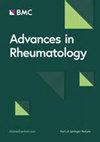疗效大小因计算方法而异,可能影响治疗效果的解释:以骨关节炎随机临床试验为例说明
IF 2.1
4区 医学
Q3 RHEUMATOLOGY
引用次数: 0
摘要
说明(标准化)效应大小(ES)如何因计算方法而异,并提供改进报告的注意事项。我们分析了在骨关节炎患者中进行的三项坦珠单抗试验的数据。在WOMAC疼痛(结果)方面,他尼珠单抗与对比药的ES定义为均值之间的最小二乘差(重复测量分析的混合模型)除以结果评分的集合标准差(SD)。对三种计算标准差的方法进行了评估:基线(基线时 WOMAC 疼痛值的集合标差[各治疗方法的集合标差]);终点(评估主要终点时这些值的集合标差);中位数(根据各可用时间点的集合标差计算这些值的集合标差中位数)。采用 Bootstrap 分析法计算 95% 置信区间 (CI)。在一项研究中,基于基线、终点和中位数标样的坦珠单抗 2.5 mg ES(95% CI)分别为- 0.416(- 0.796,- 0.060)、- 0.195(- 0.371,- 0.028)和- 0.196(- 0.373,- 0.028);负值表示疼痛有所改善。这种ES差异模式(基线SD最大,终点SD最小,中位SD与终点SD相似)在所有研究和坦珠单抗剂量中都是一致的。ES差异会影响治疗效果的解释。因此,我们主张除了整体计算ES外,还应明确报告ES的各个要素。当使用ES估计值来确定临床试验的样本量时,这一点尤为重要,因为较大的ES会导致较小的样本量,并有可能导致研究动力不足。Clinicaltrials.gov NCT02697773、NCT02709486 和 NCT02528188。本文章由计算机程序翻译,如有差异,请以英文原文为准。
Effect size varies based on calculation method and may affect interpretation of treatment effect: an illustration using randomised clinical trials in osteoarthritis
To illustrate how (standardised) effect sizes (ES) vary based on calculation method and to provide considerations for improved reporting. Data from three trials of tanezumab in subjects with osteoarthritis were analyzed. ES of tanezumab versus comparator for WOMAC Pain (outcome) was defined as least squares difference between means (mixed model for repeated measures analysis) divided by a pooled standard deviation (SD) of outcome scores. Three approaches to computing the SD were evaluated: Baseline (the pooled SD of WOMAC Pain values at baseline [pooled across treatments]); Endpoint (the pooled SD of these values at the time primary endpoints were assessed); and Median (the median pooled SD of these values based on the pooled SDs across available timepoints). Bootstrap analyses were used to compute 95% confidence intervals (CI). ES (95% CI) of tanezumab 2.5 mg based on Baseline, Endpoint, and Median SDs in one study were − 0.416 (− 0.796, − 0.060), − 0.195 (− 0.371, − 0.028), and − 0.196 (− 0.373, − 0.028), respectively; negative values indicate pain improvement. This pattern of ES differences (largest with Baseline SD, smallest with Endpoint SD, Median SD similar to Endpoint SD) was consistent across all studies and doses of tanezumab. Differences in ES affect interpretation of treatment effect. Therefore, we advocate clearly reporting individual elements of ES in addition to its overall calculation. This is particularly important when ES estimates are used to determine sample sizes for clinical trials, as larger ES will lead to smaller sample sizes and potentially underpowered studies. Clinicaltrials.gov NCT02697773, NCT02709486, and NCT02528188.
求助全文
通过发布文献求助,成功后即可免费获取论文全文。
去求助
来源期刊

Advances in Rheumatology
Medicine-Rheumatology
CiteScore
4.00
自引率
4.30%
发文量
41
审稿时长
53 weeks
期刊介绍:
Formerly named Revista Brasileira de Reumatologia, the journal is celebrating its 60th year of publication.
Advances in Rheumatology is an international, open access journal publishing pre-clinical, translational and clinical studies on all aspects of paediatric and adult rheumatic diseases, including degenerative, inflammatory and autoimmune conditions. The journal is the official publication of the Brazilian Society of Rheumatology and welcomes original research (including systematic reviews and meta-analyses), literature reviews, guidelines and letters arising from published material.
 求助内容:
求助内容: 应助结果提醒方式:
应助结果提醒方式:


